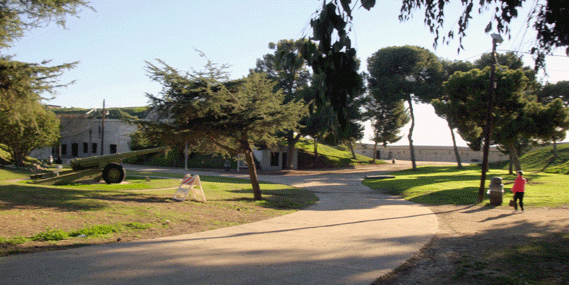U.S. Seacoast Defense 1781-1948: A Brief History
Modern U.S. Harbor Defense Construction, 1886-1917; The Endicott and Taft Boards
During the years following the termination of harbor defense construction in the 1870s, several advances took place in the design and construction of heavy ordnance, including the development of breech-loading, longer-ranged cannon, increasingly made of steel rather than iron. Coupled with these developments was a growing alarm over the obsolescence of existing seacoast defenses. In 1883, the navy began a new construction program for the first time since the Civil War. The navy’s new ships were to be used offensively rather than defensively. This naval policy, along with the advances in weapon technology, required a new system of seacoast defenses which would safeguard America’s harbors and free the navy for its new role. In 1885 President Cleveland appointed a joint army, navy, and civilian board, headed by Secretary of War William C. Endicott, to evaluate proposals for new defenses. The board painted a grim picture of existing defenses in its 1886 report and recommended a massive $127 million construction program of breech-loading cannons and mortars, floating batteries, and submarine mines for some 29 locations around the coast-line. In 1888 Congress created the Board of Ordnance and Fortification to test weapons for the new program. Funding for the actual construction of a modest building program began in 1890, under the direction of the U.S. Army Corps of Engineers. The new guns were dispersed over in widely separated concrete emplacements, having underground magazines and earthen and concrete parapets that were designed to blend in with their surroundings. A key part of these new defenses were electrically controlled mine fields. Facilities for planting, retrieving, storing and controlling these mines were built at many locations. In 1898, the outbreak of the Spanish-American War necessitated the use of some of the older muzzle-loading ordnance and other guns in hurriedly-built “temporary” defenses around the United States. Mine fields were planted and maintained during that conflict.
- A 1898 emergency battery built next to Fort Popham, on the Kennebec River, ME (Fort Popham State Park)
- An early Endicott-era battery: Battery Marcus Miller at Fort Winfield Scott, San Francisco, CA (Golden Gate National Rec. Area)
- A late Endicott-era battery-Battery David Russell at Fort Stevens, near Astoria, OR. (Fort Stevens State Park)

A Taft-era battery-Battery Osgood at Fort MacArthur in Los Angeles, CA (Angels Gate Park, City of Los Angeles)
In 1905, President Theodore Roosevelt convened another board, this one under his secretary of war, William H. Taft, to review and update the earlier board’s program. Most of the changes recommended by this board were technical, such as adding more searchlights, electrification for lighting, communications, and projectile handling, and a more sophisticated optical aiming technique. The board also recommended the fortification of key harbors in the newly acquired territories of Cuba, the Philippines and Hawaii, and a few other sites. (The Panama defenses were authorized by the Spooner Act of 1902, which authorized the construction of the Panama Canal.) The Taft program fortifications differed slightly in battery construction and had fewer numbers of guns at a given location than those of the Endicott program. These two modern programs, although not fully realized, gave the United States a coastal defense system that was equal to any other nation by the beginning of World War I.
Links to Other Periods
Civil War & Post-Civil War (1861-1875)



